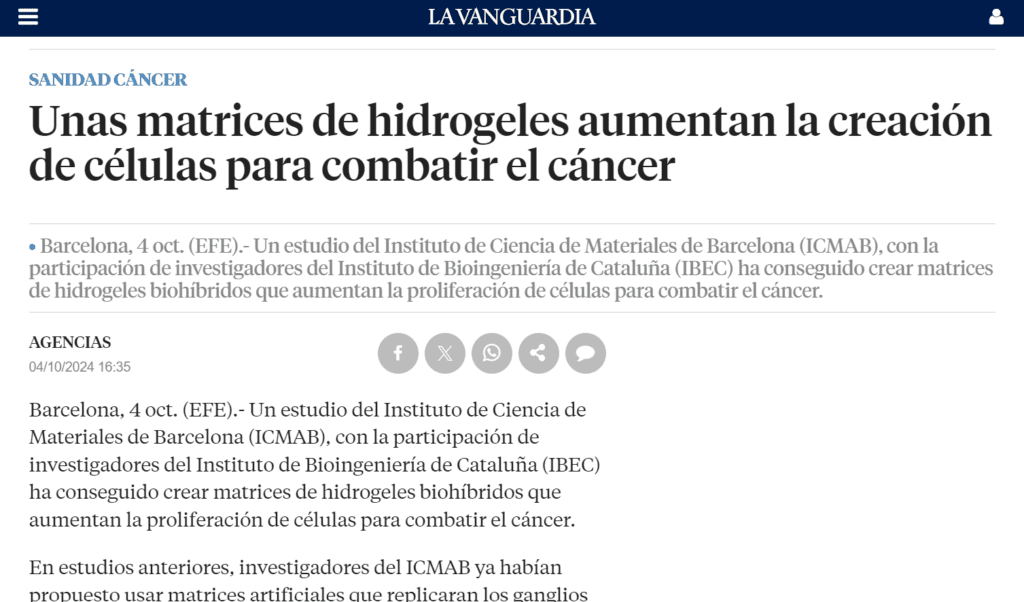ABOUT
Research in the Biomaterials for Regenerative Therapies group is devoted to the development and knowledge transfer to industry of innovative biomaterials and scaffolds for tissue regeneration.
We design, fabricate and characterize bioactive and biodegradable materials and we investigate their interactions with biological entities, both in terms of their fundamental aspects and with specific applications for tissue engineering purposes in mind. The aim is the repair and functional restoration of tissues or organs by means of 3D scaffolds, cells, and signals.
Our research is built up in three pillars:
- Creating microenvironments for tissue regeneration. Understanding the interaction of the designed scaffolds with the cells is the key to induce a regenerative environment. We have developed models that explain the activation of angiogenesis and neurogenesis promotion based on the biomaterials properties and the structure of the scaffold, together with the degradation products that promote a bioactive environment. During 2018 we have studied the activation of progenitor cardiac cells, recruitment and differentiation in response to these scaffolds by means of instructive matrices.
- Translating basic research towards new developed products. We are applying Key Enabling Technologies in Biomaterials fabrication to give solutions to companies. A personalized maxillofacial substitute using 3D printing is being developed together with Avinent Implant system, SL. A new dressing that promotes the fast healing of chronic wounds, promoting cell recruitment and regeneration is now under preclinical studies.
- Disease models. We are developing 3D models for pre-clinical cancer research based on the use of cells self-produced extracellular matrices. These microtissues can be modified to culture cancer cells and simulate an ex vivo tumor that can be used for basic cancer research or drug screening. We are also developing novel bioinks for the fabrication of bioprinted platforms as 3D models and bioengineered constructs. The use of microfluidic devices that simulate a vessel, or a cardiac tissue is another approach we are modelling to study the cardiac regeneration process.
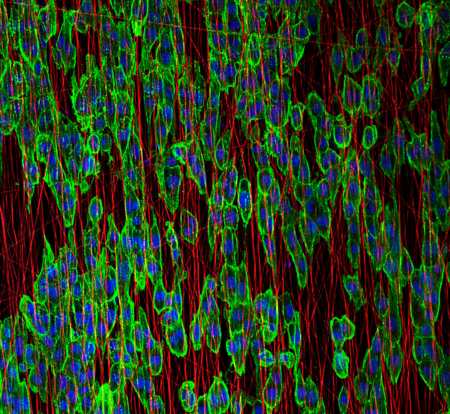
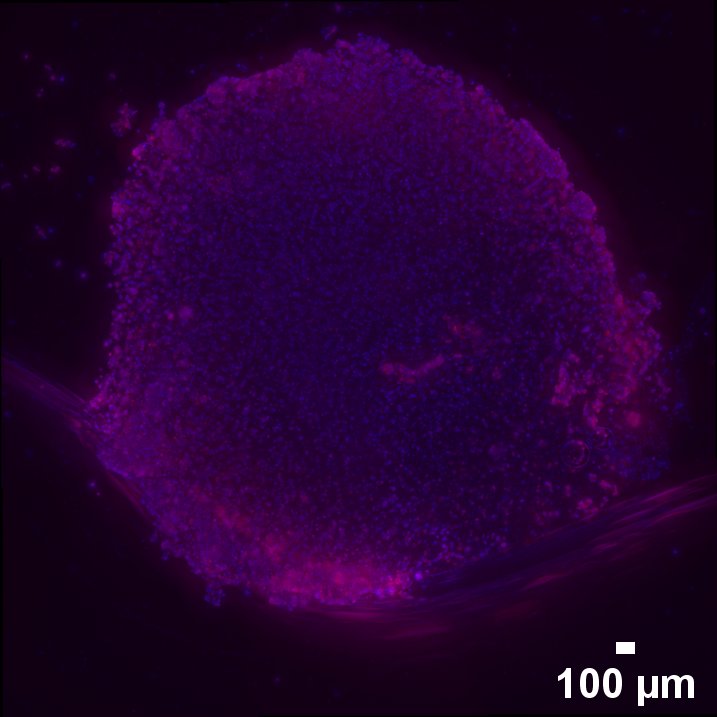

We are members of CIBER-BBN (Centro de Investigación Biomédica en Red – Bioingeniería, Biomateriales y Nanomedicina)
We are participants of the RIS3CAT LLAVOR 3D Community, funded by ACCIO, that aims to accelerate the development and adoption of additive manufacturing and 3D printing* technologies by the industry.*
We participate in two networks: i4kids, the Pediatric Innovation Hub, coordinated by SJD Barcelona Children’s Hospital, which aims to generate a positive social impact and offer solutions adapted to the paediatric population; and in the XaRFA, with 28 research groups from 14 Catalan entities, created with the aim of creating up to 12 technology-based companies and facilitating the transfer of 3D printing technologies to society.
We are members of a CIBER-ONC project: Patient Derived Organoids 2.O: Recapitulating stromal and immune microenvironment in annotated organoid platforms for advancing towards personalized cancer treatment.
We are new members of the Red de Terapia Celular (Tercel) to collaborate with the cell therapy groups in tissue and organ regeneration.
| *QuirofAM. Ecosistema d’R+D+i per la implementació i adopció de la Fabricació Additiva / Impressió 3D a la indústria de Salut (2018-2021). El proyecto QuirofAM está enmarcado dentro de la comunidad Llavor 3D, impulsada por la Generalitat de Catalunya para acelerar y desarrollar la adaptación de la fabricación aditiva en el sector industrial y cofinanciada mediante el programa operativo FEDER Catalunya 2014-2020. El objetivo del proyecto QuirofAM es la transformación de la práctica quirúrgica mediante la incorporación de la fabricación aditiva en tres niveles: modelos de ensayo quirúrgico, guías e implantes para reconstrucción e implantes bioactivos para la generación de tejidos. Uno de los beneficios más interesantes que tiene esta tecnología en el sector biomédico es la individualización de tratamientos. |
STAFF
Former Member
Prof. Josep Planell | Director, Universitat Oberta de Catalunya (UOC)
PROJECTS
| NATIONAL GRANTS | FINANCER | PI |
|---|---|---|
| DERMOGLASS · Desenvolupament d’un producte sanitari amb partícules inorgàniques pel tractament de ferides (2021 – 2023) | ACCIÓ, INNOTEC | Elisabeth Engel |
| DERMOGLASS · Fabricació i avaluació d’un prototip d’apòsit per a la cicatrització de ferides (2020-2022) | AGAUR · Ajuts Producte destinats a l’obtenció de prototipus i a la valorització i transferència dels resultats d’investigació generada per equips de recerca de Catalunya. | Elisabeth Engel |
| nAngioDerm · Materiales liberadores de iones para promover la angiogénesis en regeneración dérmica (2019-2022). | MINECO, Acciones de Programación Conjunta Internacional | Elisabeth Engel |
| BASE3D · Agrupació en tecnologies emergents en fabricació aditiva (2019 – 2022) | RIS3CAT · Tecnologies Emergents | Josep Samitier |
| BIOCARDIO · Bioingeniería de constructos basados en biomateriales para la regeneración cardiaca (2019-2021). | MICIU, Retos investigación: Proyectos I+D | Elisabeth Engel |
| TERCEL · Red de terapia celular (2018-2022). | MINECO – ISCIII, Redes temáticas de investigación cooperativa en salud | Elisabeth Engel |
| PRIVATELY FUNDED PROJECTS | FINANCER | PI |
|---|---|---|
| DERMOGLASS · Smart dressing for the treatment of chronic wounds (2019-2022). | Obra Social “la Caixa” · CaixaImpulse | Elisabeth Engel |
| FINISHED PROJECTS | FINANCER | PI |
|---|---|---|
| QuirofAM. Ecosistema d’R+D+i per la implementació i adopció de la Fabricació Additiva / Impressió 3D a la indústria de Salut (2018-2021). | ACCIO, Acreditació de comunitats RIS3CAT i la selecció de projectes col·laboratius de recerca, desenvolupament i innovació | Elisabeth Engel |
| NAngiofrac | Euronanomed | Elisabeth Engel |
| THE GRAIL · Tissue in Host Engineering Guided Regeneration of Arterial Intimal Layer (2012-2016). | HEALTH | Elisabeth Engel |
| DERMOGLASS · Smart dressing for the treatment of chronic wounds (2016-2017). | Obra Social La Caixa, Caixaimpulse, EIT Health | Xavier Puñet |
| Diseño y desarrollo de biomateriales bioactivos para la regeneración de la piel basada en la señalización controlada de liberación de iones (2013-2016). | I+D-Investigación fundamental no orientada | Elisabeth Engel |
| Andamios diseñados para promover una vascularización eficiente para fracturas óseas no consolidadas (2012-2016). | I+D-Investigación fundamental no orientada | Oscar Castaño |
| INSBIOMAT · Biomateriales instructivos para regeneración cardíaca in vivo (2015-2016). | MINECO, Acciones Dinamización “Europa Excelencia” | Elisabeth Engel |
| BIOTENDON · Tendon Tissue Engineering: A Helping Hand for Rotator Cuff Tears. | RECERCAIXA | Elisabeth Engel |
| Nous models de bioimpressió 3D d’os per a ús maxil·lofacial (2017-2019). | MINECO, Retos investigación: Proyectos I+D | Elisabeth Engel |
| MICARE · Creación de microentornos para la regeneración cardíaca in vivo (2017-2019). | MINECO, Acciones Dinamización Europa Investigación | Elisabeth Engel |
| MatriCell · Desarrollo de partículas poliméricas para generar matrices extracelulares in vitro (2016-2019). | MINECO, Retos investigación: Proyectos I+D | Elisabeth Engel |
| State of the Art Research on Expandable Materials (2017-2018). | TUCSE, S.L | Miguel Ángel Mateos |
PUBLICATIONS
EQUIPMENT
- Surface characterization equipment (contact angle, Z potential, nanoindenter)
- Cell culture facilities
- Molecular Biology equipment: protein and DNA electrophoresis
- Thermocycler (PCR)
- Rapid prototyping tool (part of the Production of biomaterials and nanoparticles platform of the CIBER-BBN)
http://www.ciber-bbn.es/programas/plataformas/equipamiento/biomateriales?nodo=nodo2&locale=en - Peptide synthetiser
- Combustion furnace
- Electrospinning device
- Spin-coater
- Vibrational viscosimeter
COLLABORATIONS
- Prof. Mario Barbosa
Instituto de Investigação e Inovação em Saúde da Universidade do Porto, Portugal - Dr. Riccardo Levato
UMC Utrecht, The Netherlands - Prof. Didier Letourneur
Laboratoire de Bioingénierie Cardiovasculaire, INSERM, University Denis Diderot-Paris 7, Paris, France - Prof. Dirk Grijpma
Department of Biomaterials Science and Technology, University of Twente, Twente, the Netherlands - Prof. Francesco Serino
Department of Vascular Surgery, Istituto Dermatologico dell’Immacolata (IDI), Rome, Italy - Dr. Jerónimo Blanco
Institut de Ciències Cardiovasculars de Catalunya and CSIC, Barcelona, Spain - Dr. Joelle Amedee
INSERM, University of Bordeaux Segolen, Bordeaux, France - Dr. José Becerra Ratia
Dept. Biología Celular, Genética y Fisiología, Universidad de Málaga, Spain - Dr. Margarita Calonge
Institute of Ophthalmobiology (IOBA), Universidad de Valladolid, Spain - Dr. José Carlos Rodríguez-Cabello
Dept. de Física de la Materia Condensada, Universidad de Valladolid, Spain - Prof. Kevin Healy
Biomaterials & Tissue Engineering Laboratory, University of California at Berkeley, USA - Prof. Wouter J.A. Dhert & Dr. Jos Malda
Department of Orthopaedics, University Medical Center Utrecht, The Netherlands - Prof. Andrés J. García, F.B.S.E.
Institute for Bioengineering and Bioscience, Georgia Institute of Technology, Atlanta, GA - Dr. Luigi Ambrosio
Institute of Polymers, Composites & Biomaterials, National Research Council, Naples, Italy - Prof. Carlos Semino
Grupo de Insuficiencia Cardíaca y Regeneración Cardíaca (ICREC), IQS School of Engineering, Universitat Ramon Llull - Dr. Antonio Sinovas
Vall d’Hebron Institute of Research - Dr. Dimitrios Zeugolis
Biomedical Engineering (Biomaterials) at NUI Galway - Dr. Aitor Aguirre
Department of Biomedical Engineering, MSU, Michigan, US - Prof. Joao Mano
CICECO, Aveiro University, Portugal - Prof. Gino Ambrosio
Università degli Studi di Napoli Federico II: Napoli, Campania, Italy - Prof. Timothy Thomson
IBMB-CSIC, Barcelona - Dr. Elena Rebollo
IBMB-CSIC, Barcelona - Dr. Jordi Camps
Gastrointestinal and Pancreatic Oncology Group, Institut D’Investigacions Biomèdiques August Pi i Sunyer (IDIBAPS) - Dr. Olivier Stephan
Univ-grenoble-alpes, France - Prof. Humberto Palza
Departamento de Ingeniería Química, Biotecnología y Materiales, Universidad de Chile - Dr. Judith Guasch
ICMAB, Barcelona - Dr. Elena Xuriguera
DIOPMA, University of Barcelona - Prof. Carlos Aleman
EEBE, UPC - Dr. Felip Fenollosa
Centre CIM, UPC - Prof. Aurora Hernandez-Machado
Estructura i Constituents de la Materia, University of Barcelona - Avinent Implant System, SL
Sant Pedor, Spain - Laboratorios ERN
Barcelona, Spain - Microlight3D
France - Vecmedical SL
Barcelona - Dr. Roberto Vélez
Orthopedic oncology and Traumatology department, Vall d’Hebron Hospital - Dr. Joan-Pere Barret
Head of the Plastic Surgery and Burns Service at Hospital Vall d’Hebron
NEWS
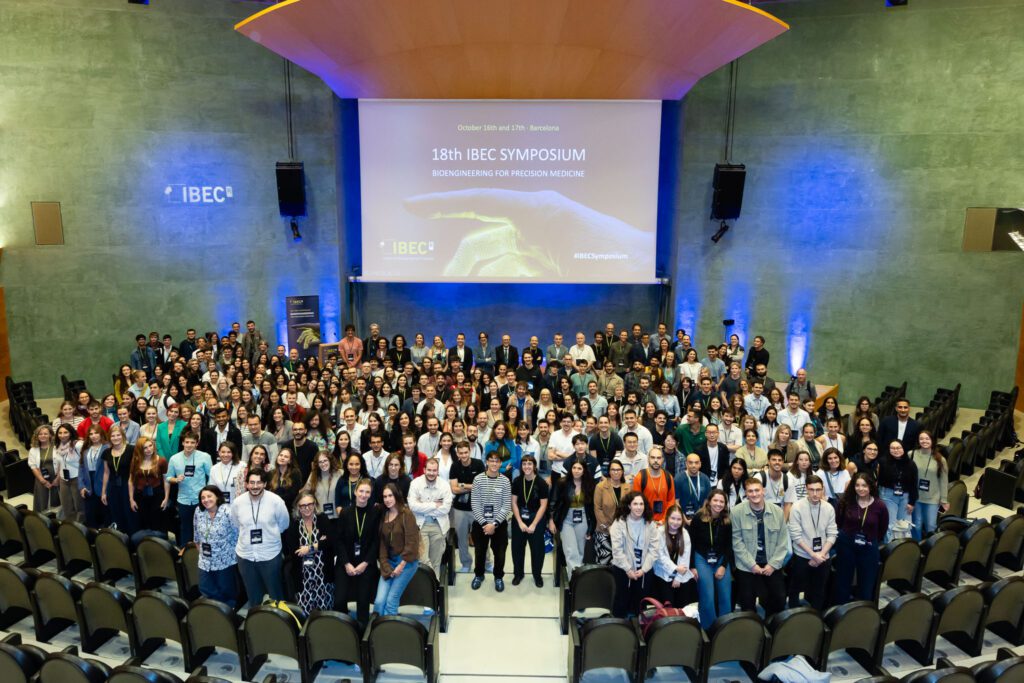
Bioengineering for precision medicine at the 18th IBEC Symposium
The 18th annual IBEC Symposium focused on ‘Bioengineering for Precision Medicine’, which is one of IBEC’s key areas of application. The event was attended by nearly 300 people, including local and international researchers. The multidisciplinary environment provided experts from other centres and the IBEC community with the opportunity to present their projects and exchange knowledge.
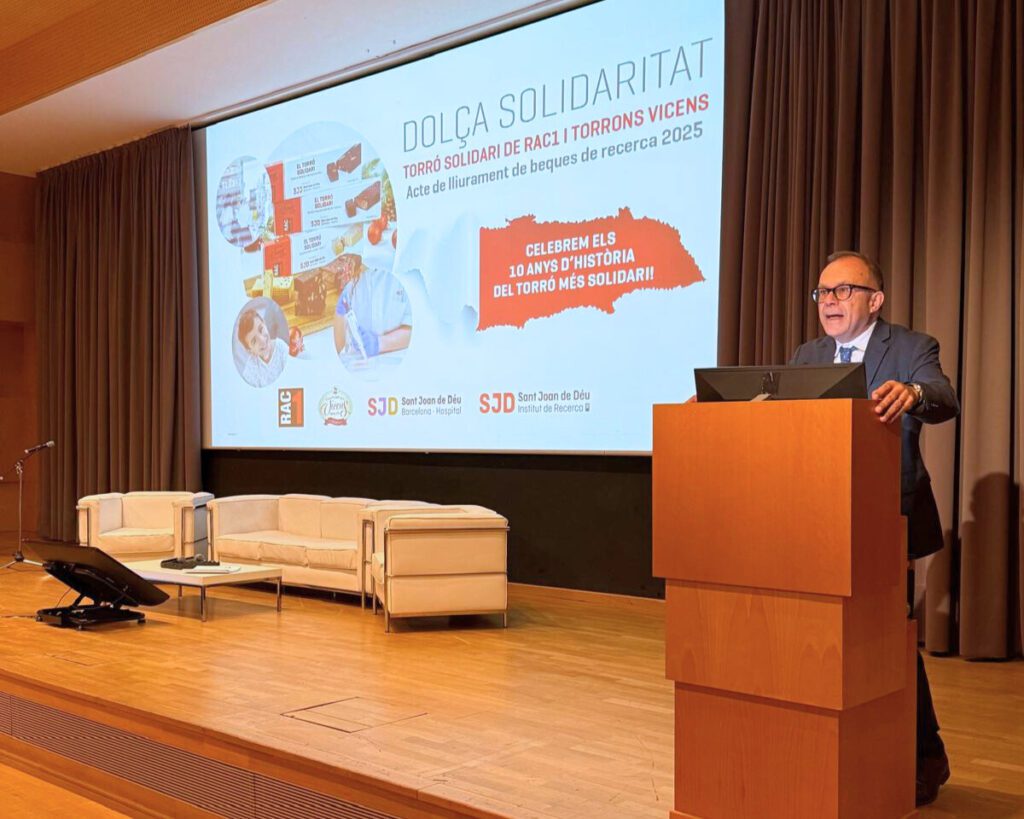
IBEC to co-lead two projects awarded Solidarity Nougat Grants by RAC1 and Torrons Vicens
The presentation ceremony for the Solidarity Nougat Grants by RAC1 and Torrons Vicens took place yesterday. In this second edition, the Institute for Bioengineering of Catalonia (IBEC) has been selected to co-lead two of the four winning projects. The 2025 call aims to stimulate research and innovation in rare paediatric diseases at the SJD Barcelona Children’s Hospital, as part of the ‘ÚNICAS’ project.
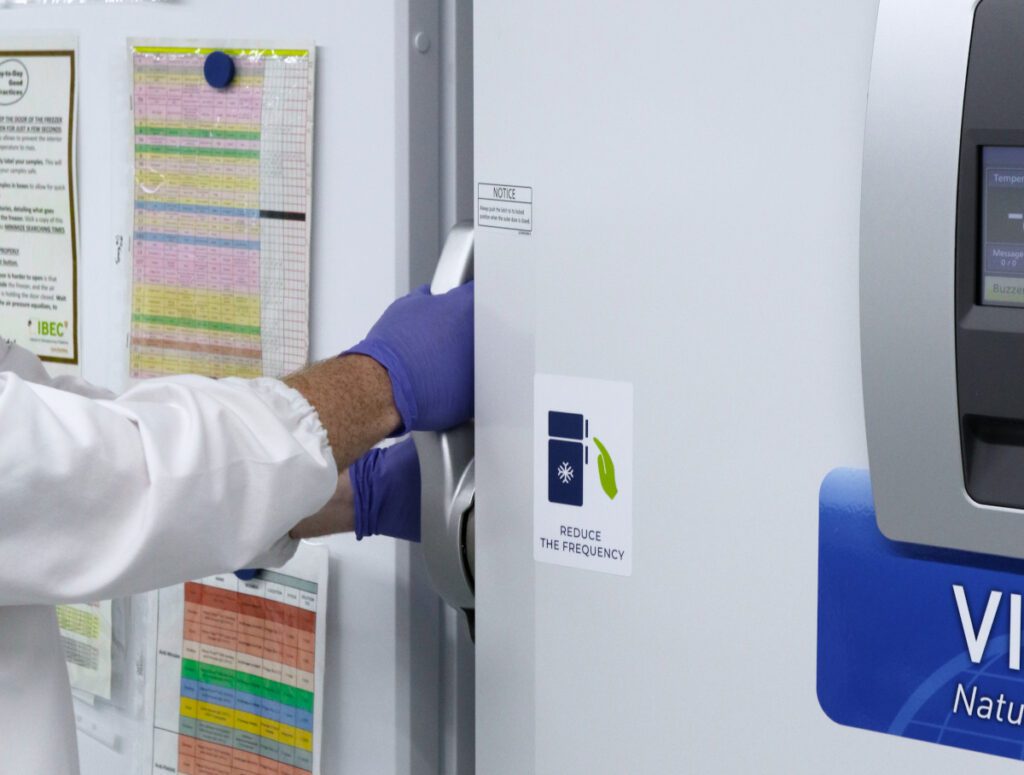
Seven additional IBEC labs achieve top-level in My Green Lab certification
Seven more research groups at the Institute for Bioengineering of Catalonia (IBEC) have been certified by My Green Lab, reaching the highest rating, the Green Level, for sustainable laboratory practices. With these additions, IBEC core facilities and 70% of the Institute’s laboratories are now certified.
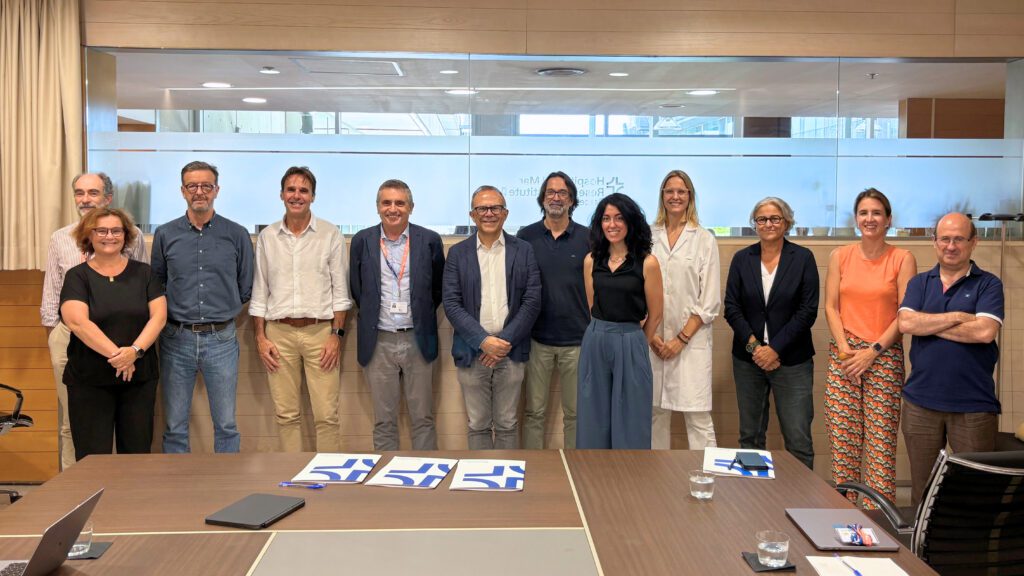
IBEC and the Hospital del Mar formalise a new collaboration
The first collaboration day between the Institute for Bioengineering of Catalonia (IBEC) and the Hospital del Mar Research Institute was held today at the Barcelona Biomedical Research Park (PRBB). The meeting provided an opportunity to share research projects, identify areas for collaboration and formalise a strategic alliance through the signing of a collaboration agreement between IBEC, the Hospital del Mar and the Hospital del Mar Research Institute.
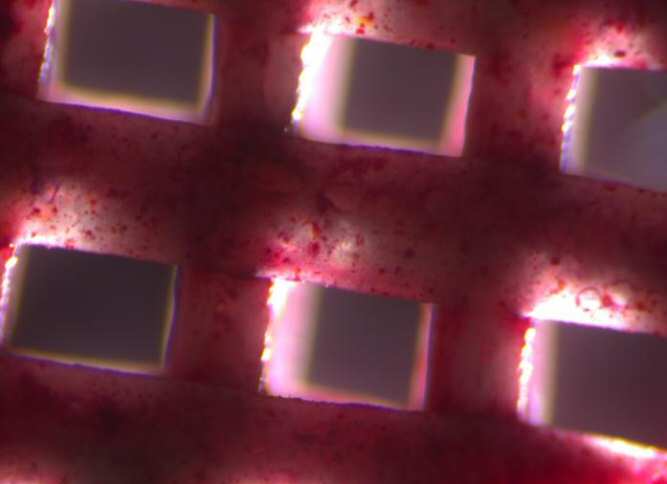
NCYT: Nuevos andamios para una mejor cicatrización y regeneración del tejido óseo
El equipo de investigadores del Instituto de Bioingeniería de Cataluña (IBEC) liderado por Óscar Castaño, han desarrollado andamios de PLA-CaP que mejoran la cicatrización y regeneración del tejido óseo. Estos … Read more
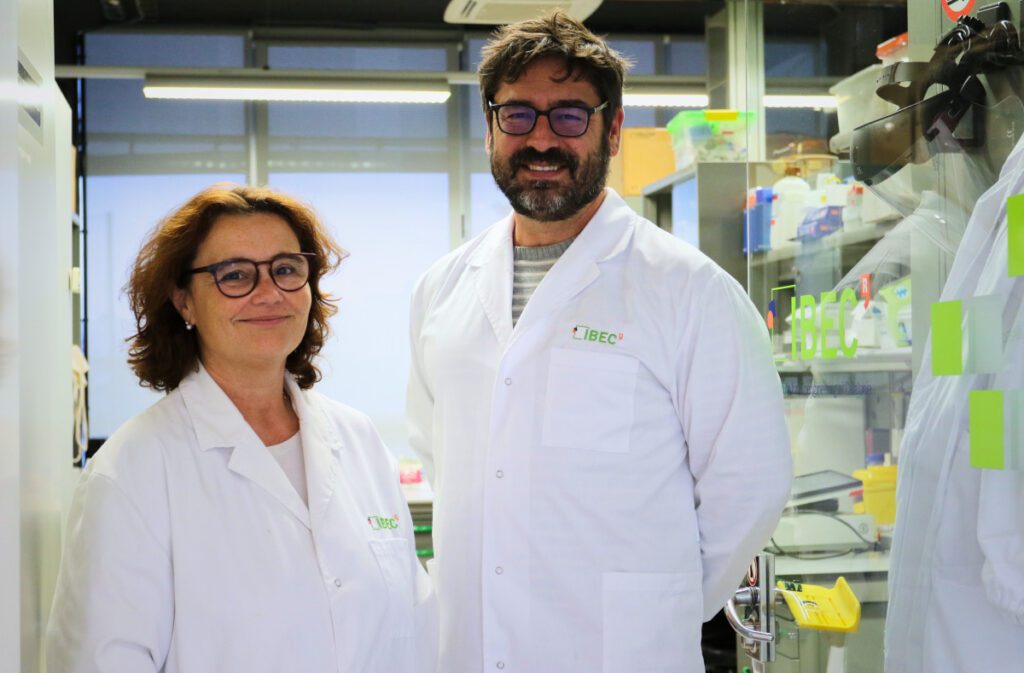
Innovative 3D printed scaffolds offer new hope for bone healing
Critical bone defects resulting from trauma, tumor resection, or congenital conditions present significant challenges in medical treatment due to high rates of graft failure caused by inadequate blood supply. To address this issue, researchers at the Institute for Bioengineering of Catalonia have developed novel 3D printed scaffolds made from polylactic acid and calcium phosphate. These innovative scaffolds promote blood vessel formation, ensuring better healing and regeneration of bone tissue.
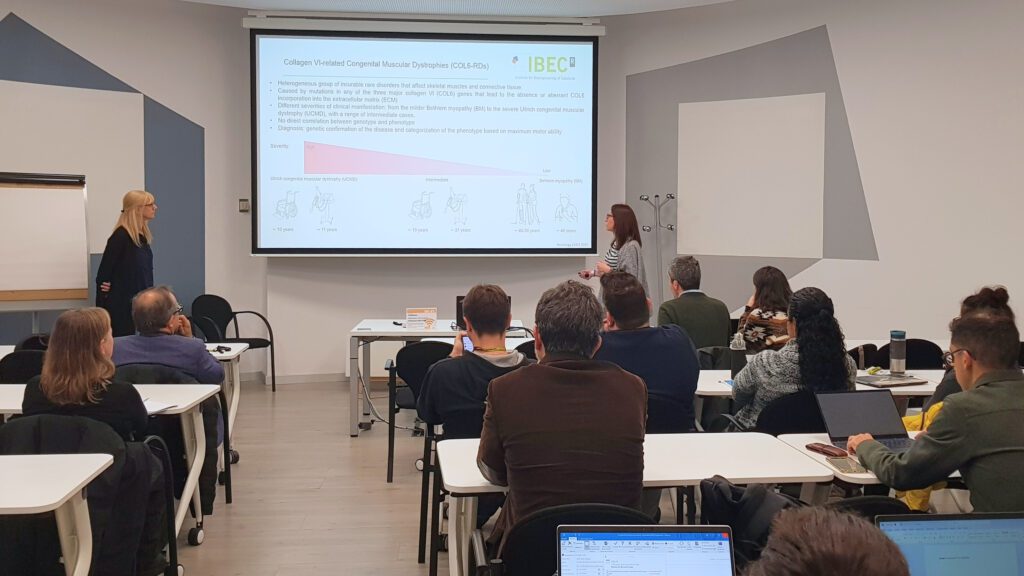
IBEC and SJD Barcelona Children’s Hospital strengthen their collaboration with a day of translational innovation
The Institute for Bioengineering of Catalonia and the Sant Joan de Déu Barcelona Children’s Hospital have held a joint conference to strengthen collaboration in bioengineering and translational medicine. The event, held this morning at the IBEC, highlighted innovative projects, presented a joint PhD programme and encouraged the exchange of ideas between researchers from both institutions.
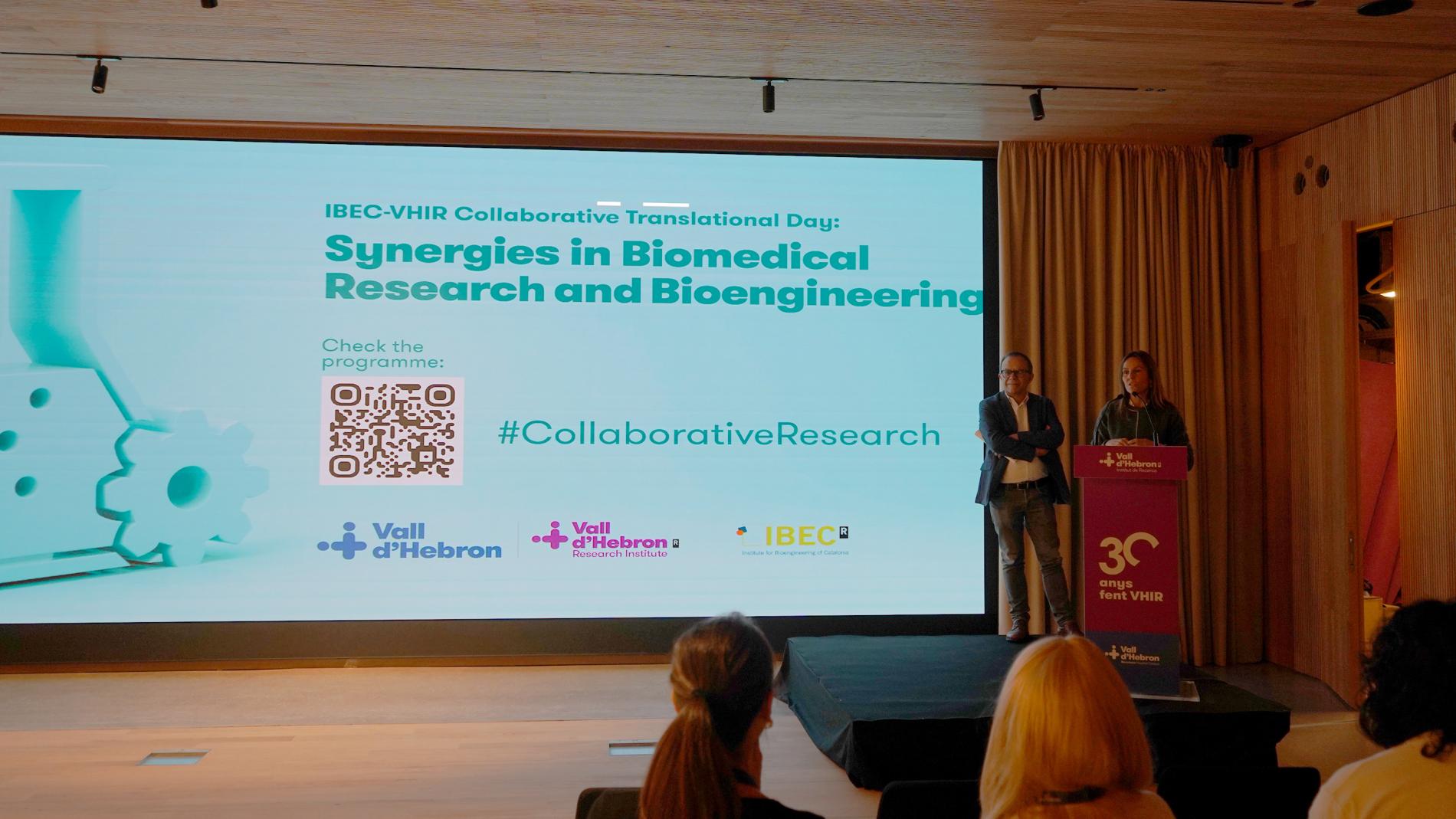
IBEC and VHIR hold a collaboration day to promote synergies
The 1st Translational Collaboration Day between the Vall d’Hebron Institute of Research (VHIR) and the Institute of Bioengineering of Catalonia (IBEC), held on 21st November, was an opportunity to learn about the projects and research lines of both institutions and to promote interaction between professionals.
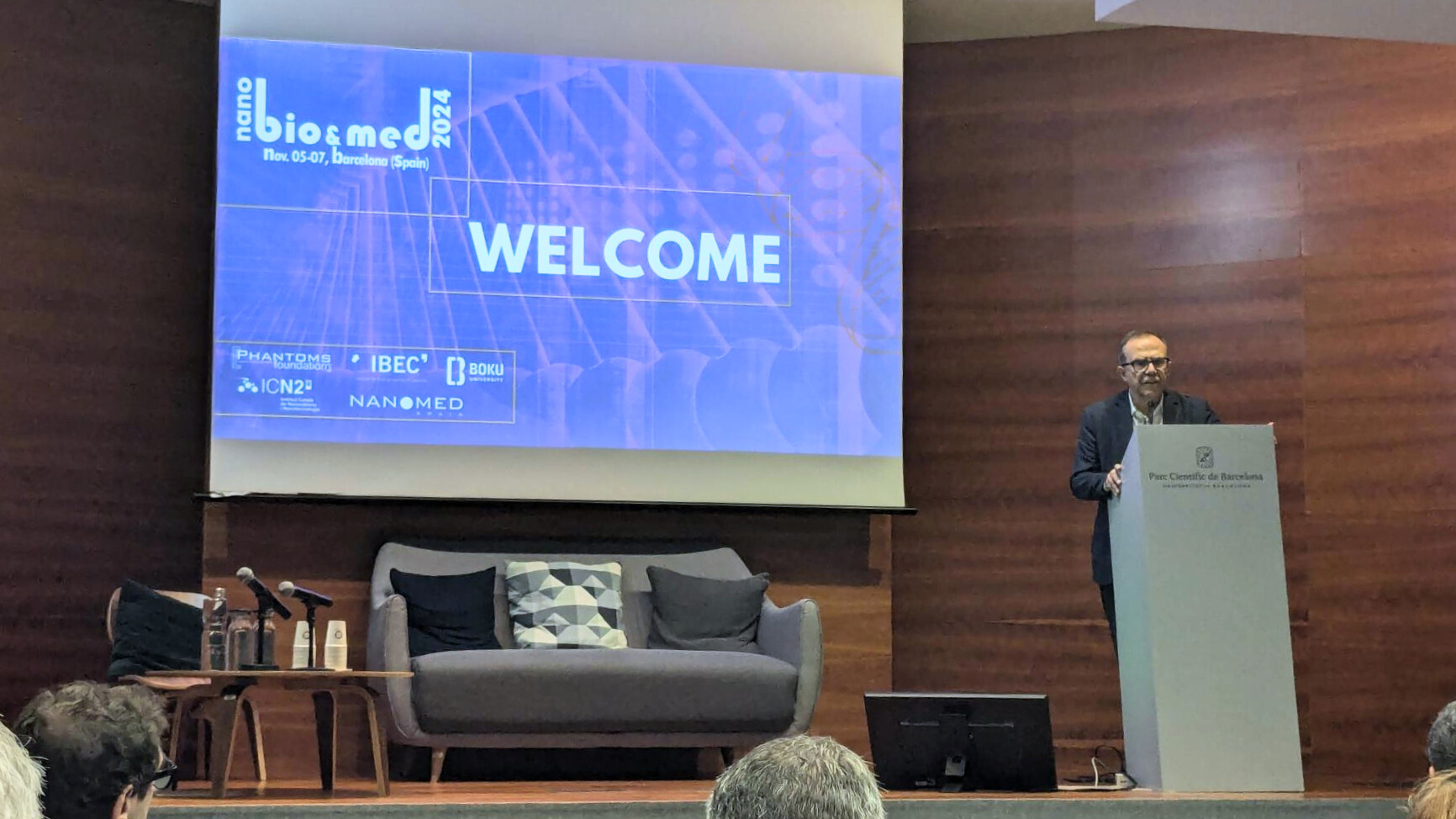
Advances in nanobiotechnology and nanomedicine explored at the 12th International NanoBio&Med Conference
The latest developments in nanotechnology, biotechnology and medicine were presented at the NanoBio&Med 2024 International Conference, held this week at the Barcelona Science Park (PCB) from 5 to 7 November. This is an annual event designed to establish new collaborations and promote innovative projects in the scientific-industrial sector.
JOBS
Predoctoral Researcher at the The Biomaterials for Regenerative Therapies Research Group
Ref: PhD-EE // Deadline: 23/10/2025
Postdoctoral position at the Biomaterials for Regenerative Therapies Research Group
Ref: PD-EE // Deadline: 11/03/2025
Postdoctoral position at the Research Group Biomaterials for regenerative therapies
Ref: PD-EE //Deadline: 18/04/2024
Senior researcher at the Biomaterials for Regenerative Therapies Research Group (SR_EE)
Ref: SR-EE/Deadline: 28/11/2023
Research Assistant at the Biomaterials for Regenerative Therapies Research Group
Ref: EE_RA/Deadline: 21/11/2023
Postdoctoral Researcher at the Biomaterials for Regenerative Therapies Group (PD-EE)
Ref: PD-EE // Deadline: 19/05/2023
Research Assistant at the Biomaterials for Regenerative Therapies Research Group (RA-EE)
Ref: RA-EE // Deadline: 19/05/2023
Research Assistant at the Biomaterials for Regenerative Therapies Research Group
Research Assistant / Deadline October 19th 2022
PostDoc Researcher at the Biomaterials for Regenerative Therapies Research Group
Ref: PostDoc / Deadline: 31st July 2022
PostDoc Researcher at the Biomaterials for Regenerative Therapies Research Group
Application Deadline: 23/11/2021Ref: PD-EE The Biomaterials for Regenerative Therapies group at the Institute for Bioengineering of Catalonia (IBEC) is looking for a Postdoc position to work on the development of new platforms for skin regeneration. The contract will be within the framework of the European Consortium nAngioderm, an EuroNanoMed 3 project funded by the Spanish Ministry of Science and Innovation, whose objective is to develop devices based on nanotechnology and drug delivery tools able to address the healing of acute and chronic wounds.



 ibecbarcelona.eu
ibecbarcelona.eu